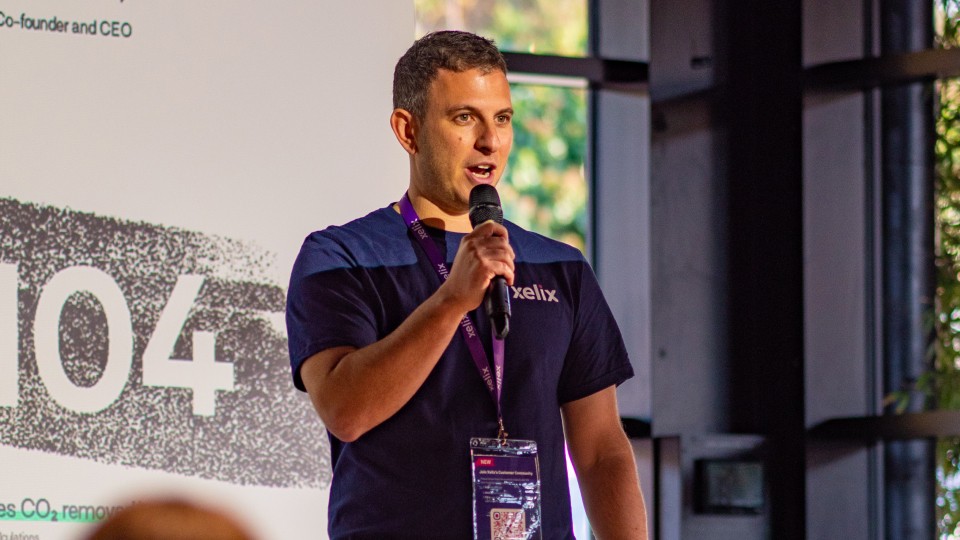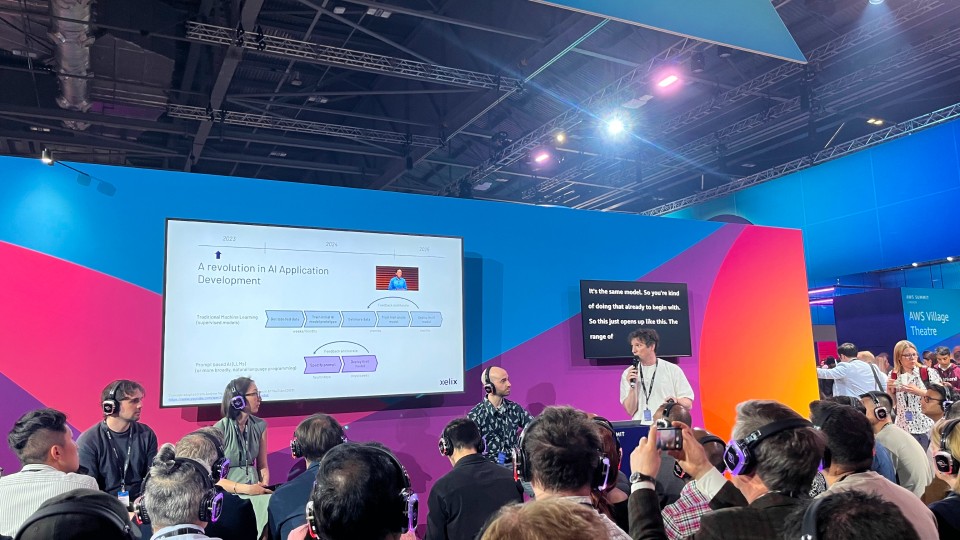このコンテンツはいかがでしたか?
Riding the AI wave: How Xelix is breaking boundaries in fintech

The financial services sector has been struck by a series of “waves” says Paul Roiter, Co-Founder and CEO of fintech startup, Xelix. Each wave brought the promise of transformation: of elevating the operations of the CFO by digitizing and automating core processes. First, we saw the adoption of Robotic Process Automation, which uses basic robots to automate tasks. The results, like much of the technology, were low-level. As such, Xelix has capitalized on a new wave, which signals “a much more intelligent opportunity to really displace manual labor and handle more tasks autonomously.” That wave is AI.
Xelix is addressing the challenges of the CFO and accounts payable (AP) teams of organizations across the UK and US, with AI-powered solutions that automate core auditing and accounting processes. In doing so, Roiter says, “we help them save money, reduce inefficiencies, and reduce risk.” Along with Co-Founder and CPO Phil Watts—who drew on his experience as an auditor—Roiter started Xelix with a bold mission: “to build an AI platform that genuinely makes the core AP audit and control processes smarter, more automated, and more intelligent.”
AWS has supported this mission from the company’s early days. Xelix used AWS Activate Credits to adopt Amazon Nova and Amazon Bedrock-powered large language models (LLMs), through its participation in the AWS Activate program. Utilizing generative AI, Xelix has built an extensive set of capabilities powered by LLMs. Following the launch of its core platform, the startup expanded its business and offerings further with a second product release: an intelligent Accounts Payable Helpdesk solution.
A gateway to AI
AWS provided a straightforward route into AI adoption for Xelix and a “huge opportunity to rethink a lot of back-office processes and move away from manual Excel-driven activity, get rid of mundane tasks and help people focus on the stuff that moves the needle,” says Roiter. This addresses the core challenge of many AP teams tasked with processing invoices, tracking payments, keeping records, and maintaining solid supplier relationships.
Traditionally, this involved manually logging and monitoring data via numerous siloed spreadsheets; a real drain on human and financial resources. Payments could be slow, processes tedious, and communication with suppliers delayed. Operating with legacy systems also increased the risk of human error, resulting in over payments, overworked AP teams, and under served suppliers.
Accuracy and automation

Xelix’s platform addresses these challenges, offering an AP control center with “embedded AI throughout that whole workflow,” says Watts. The platform uses agents to handle emails, reconcile statements, and generate responses. Automating these key processes reduces manual effort, time, cost, and the risk of human error, and increases accuracy and AP productivity.
The statement reconciliation agent, for example, automatically reconciles supplier statements against enterprise resource planning records. With legacy approaches, “humans were doing this manually and it might take 10 to 15 minutes to do one reconciliation. In a perfect world, our customers would be dealing with thousands of these every single month,” which many do not have the resources to achieve. Xelix has unlocked this capability, allowing even the smallest businesses to process all of these thousands “every single month, and up to 90 percent of them will be automated, dramatically reducing the time taken.” The Xelix system “gets up to 90 percent accuracy” as well. In addition to time and effort, AI is also being deployed to enable cost saving and risk reduction by “addressing the problem of payment leakage,” says Roiter. The solution scans documents to flag duplicate invoices, posting errors, over payment risks, and suspicious activity.
Supercharged startup
Xelix started as a small startup, but its embrace of AWS solutions from its founding days provided a massive competitive differentiator that fueled growth. “Most of our competitors have no kind of machine learning (ML) or AI embedded into their products, so that's really where we separate ourselves: by product differentiation and the sophistication of the technology,” says Roiter. Xelix is using a number of generative AI LLMs available in Amazon Bedrock, including Claude Instant, Claude Sonnet 3, Claude Sonnet 3.5, Claude Haiku, and Nova Lite.
“With our platform, we're constantly building new products, new features, and figuring out how to solve problems for our customers. And a lot of those problems we solve using AI,” adds Watts. Amazon Bedrock has been “really helpful,” he continues, “because when we have a new problem to solve, we're able to use it to test and evaluate lots of different foundational models to find which is best for a particular use case. We can evaluate the performance, we can evaluate the cost, and it makes it really easy to do that process.” Xelix can select and deploy models “without the the infrastructure headache of getting everything set up ourselves” with a plug-and-play approach.
Xelix has been an early adopter of one of the latest releases from AWS, Amazon Nova, which was the ideal choice for creating a platform to address the needs of AP teams. One of the modules in its platform enables the processing and classification of large volumes of basic documents. Amazon Nova’s lightweight, low-latency system is well suited to this kind of high-throughput process, solving problems “very efficiently” says Watts. Xelix has also saved on unnecessary spend: “it's a more suitable solution to that problem versus using a really big model which is much more expensive.”
High performance and high-speed growth
Since this initial product release, Xelix has grown its portfolio with the launch of Helpdesk, a generative AI-driven tool that “reads [supplier] emails, understands what the question is, goes and looks for the answer, and generates a response back to the supplier,” explains Roiter. “We use a lot of language models in that platform,” says Watts. This is just one of the benefits of being built in Amazon Bedrock, which features a range of high-performing LLMs to trial and deploy. Helpdesk’s advanced functionality wouldn’t be possible without AI, which again serves as a major competitive differentiator for the startup: “there are lots of ticketing tools out there which don't have any embedded AI, and humans have to manually do all the hard bits,” adds Watts.
Good credit
Xelix only began working with AWS in 2019. In addition to technological capabilities, the startup-turned-scaleup has also benefited from other AWS services which have helped it get to where it is today. “Funding was huge for us,” says Watts. Xelix received AWS Activate Credits through its participation in the AWS Activate Program and “to be given such a huge sum of money for a really young company was incredibly useful. It meant that cash we didn't have to spend on infrastructure could be spent on other parts of the business.” These savings also extended to model training; traditionally an expensive process. AWS Activate Credits “gave us the freedom to start training and testing stuff out that later ended up in the platform.” This support from AWS was “genuinely pivotal for us getting to where we are today.”
A dedicated AWS Account Manager has supported Xelix throughout its startup journey. “We touch base with them and they have made us aware of cost saving exercises, which is really helpful,” Watts continues. AWS has also provided on-the-ground support as Xelix experiments with new ways to better serve its customers and up skill its team. “AWS have been really kind and they're providing support during a hackathon. They're sending a Solutions Architect to our office and they're going to be supporting some of our team.”
A partnership for the future
That’s today, what about tomorrow? “We’re always looking for new ways to help our customers,” says Watts, by continuing to develop services that address problems which are getting increasingly harder to solve.
Xelix’s ongoing partnership with AWS will be crucial in helping it keep up with the changing AI landscape. This includes “having services like Amazon Bedrock and getting the latest foundational models.” Amazon Bedrock continues to launch new versions of foundation models with better capabilities, accuracy, and performance, which can be tested with the Amazon Bedrock console. This removes “the headache of provisioning servers to self-host models. Amazon Bedrock just does it for us, which is really helpful.”
Xelix is still embracing the AI wave, working with AWS to enhance and grow the range of services it provides to its customers—and growing its business as a result. AI will not be the final wave to hit the financial services sector, with new challenges arising and new technologies emerging. The ability to easily access and deploy the tools to address these challenges has supercharged Xelix from a fledgling startup to a fully-fledged player in the fintech space—and an inspiration to others starting out. “In order to do that,” concludes Watts, “you need an infrastructure partner like AWS to help you succeed.”
このコンテンツはいかがでしたか?